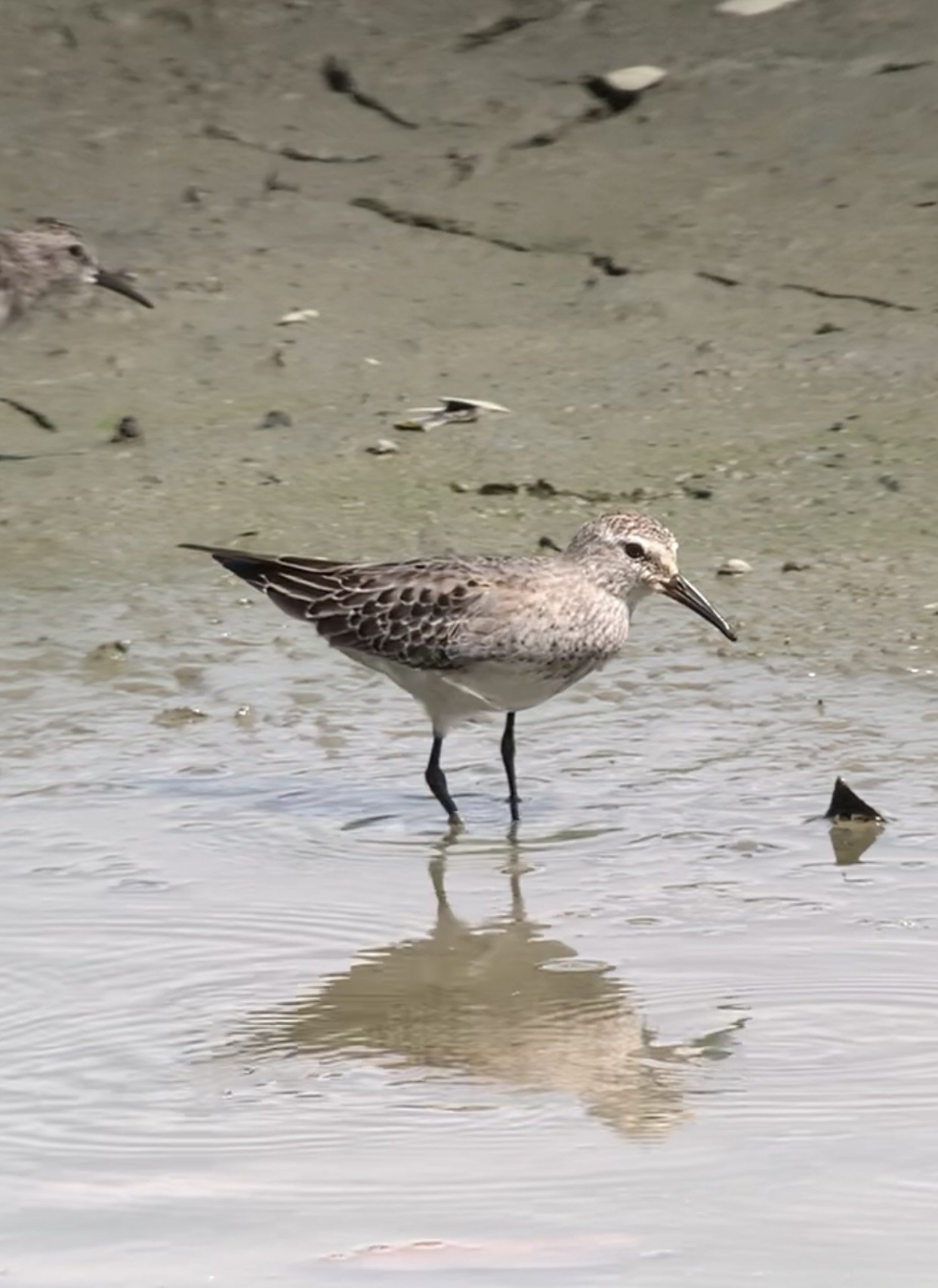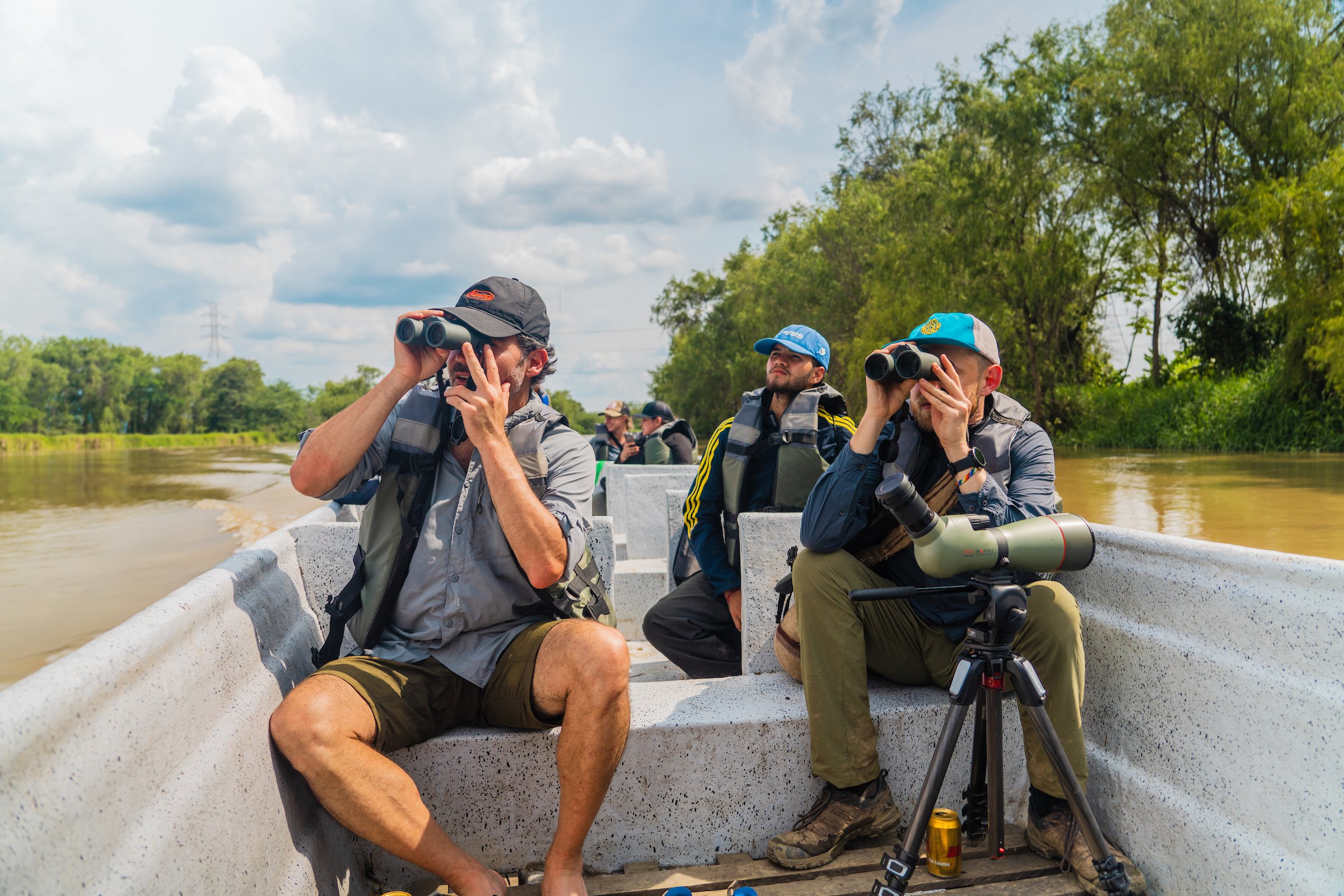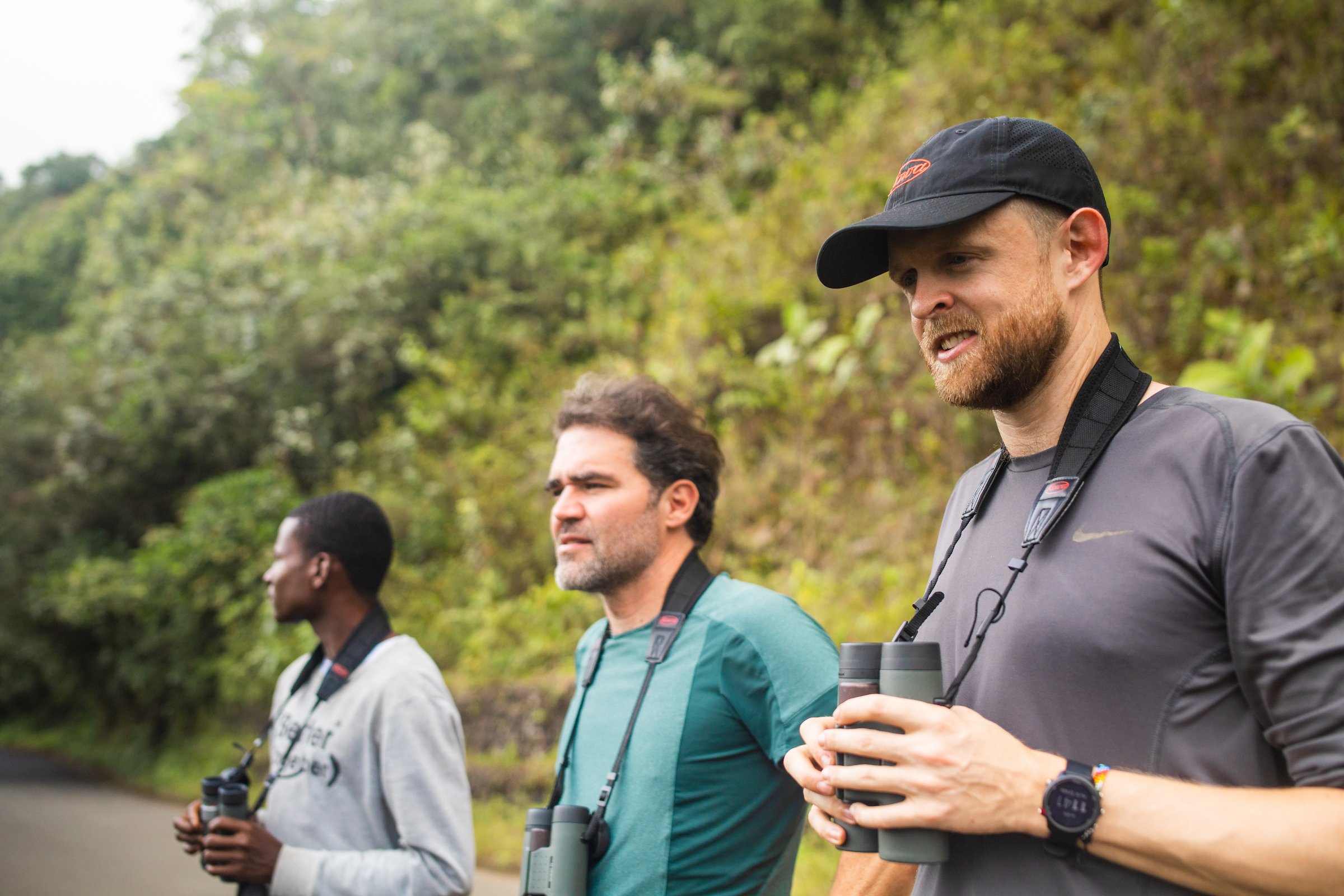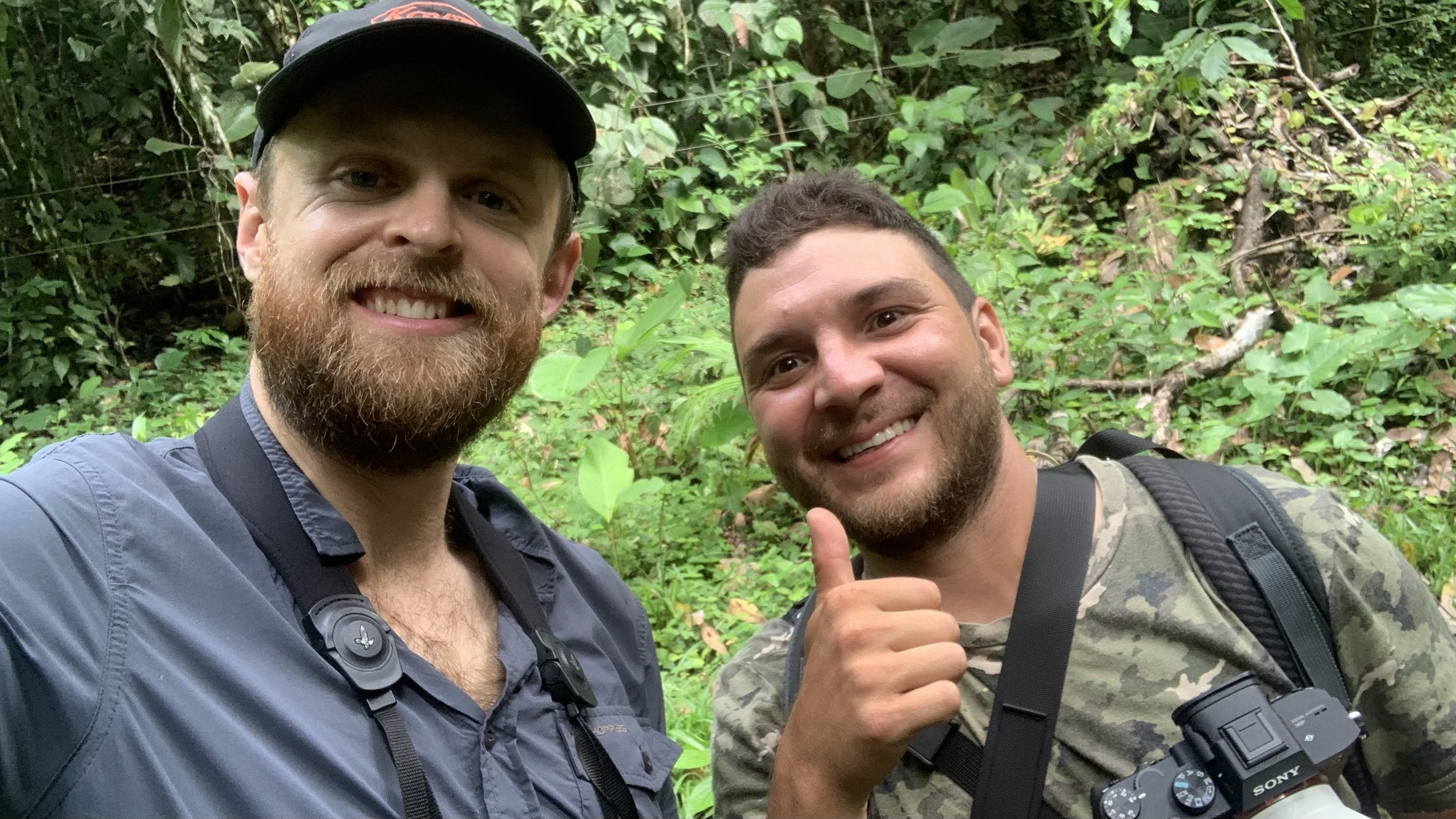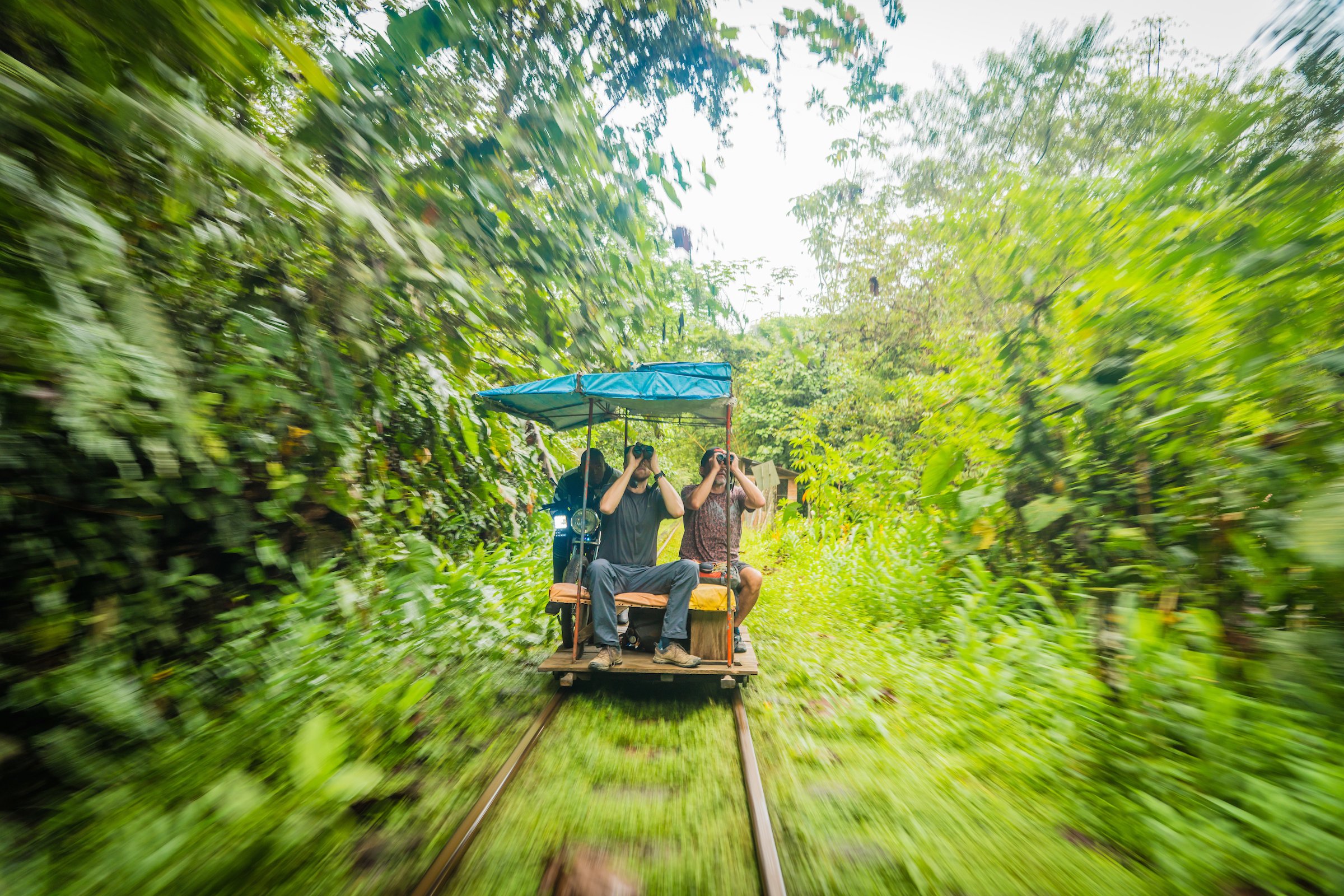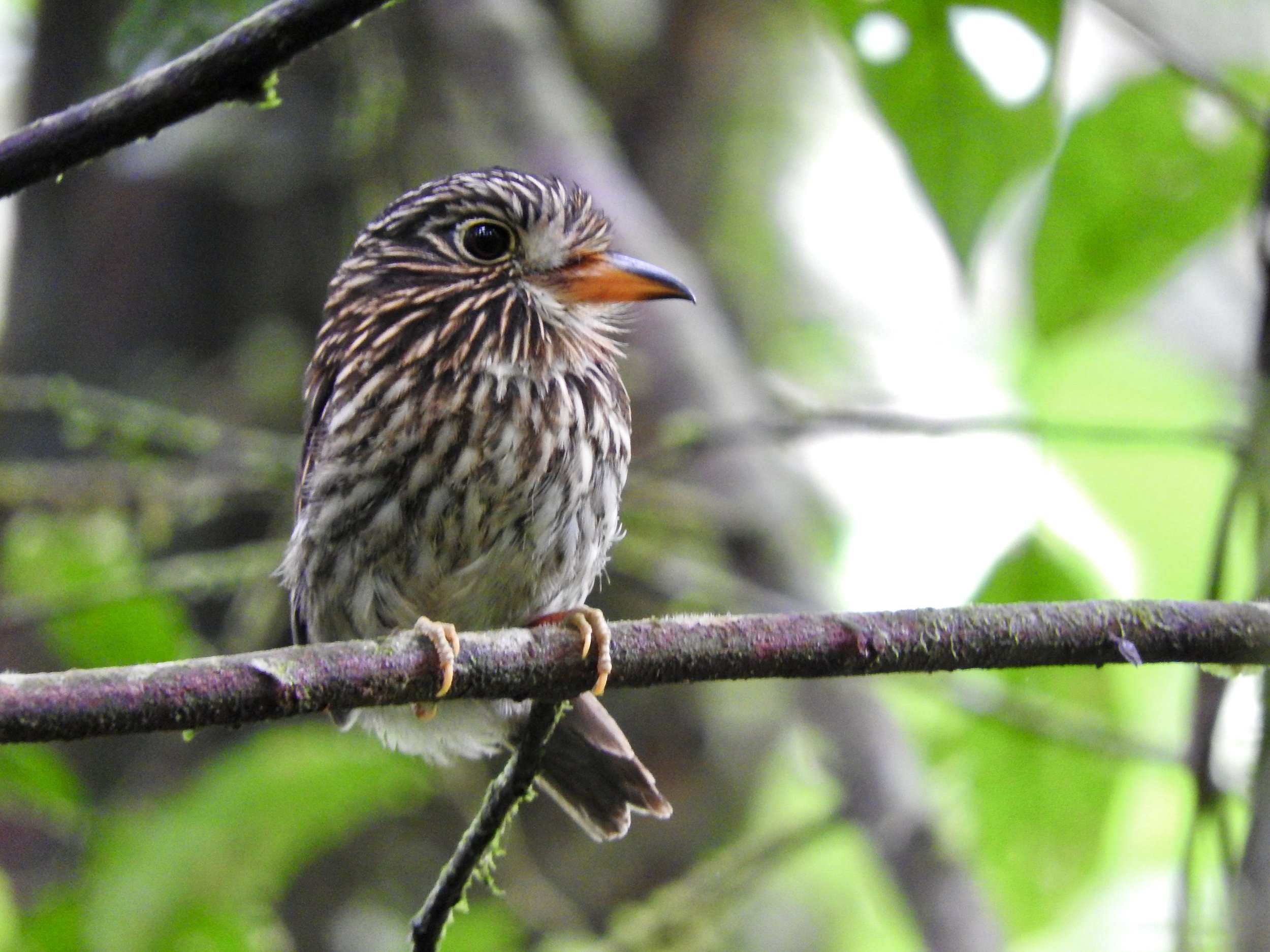Chris Bell’s Top 10 Birds of 2022: Part 1
Does Black-and-chestnut Eagle make the Top 10?
In 2022, I made it my mission to reach 1,400 species seen in Colombia. With that mission in mind, I traveled across the country searching for rare and little-known species. Coming up with a Top 10 list from this year was tricky, but I got there in the end. And I got well past the 1,400 mark!
So here's Part 1 of my Top 10 birds of 2022:
10. Barred Forest-Falcon
Barred Forest-Falcon in Costa Rica
Coming in at No. 10 is a species that I've seen in both Mexico and Costa Rica (in fact, the photo comes from my best Barred Forest-Falcon encounter at an ant swarm in Costa Rica). However, as any regular reader of this blog will know, my Colombia life list is really the only one that matters to me, so this species was still in my sights. Although it's found throughout the Colombian Andes, it is - as is the case with all forest-falcons - shy and hard to see. A glance at eBird revealed that most sightings occur in the Santa Marta Mountains, around El Dorado Reserve. Thankfully, I visited the reserve with my parents in June.
During our three days of birding around El Dorado, I managed to miss two perched Barred Forest-Falcons! Unfortunately, the nature of these intensely shy birds means that often the first person who spots them is also the last: the birds see the people and silently arrow off into the dense forest, never to be seen again. Sadly, our guide Breiner had been the first person on both occasions, and I missed the birds.
On our final morning, I went out with my Dad to bird the trail behind our rooms. A fellow guest had heard a Barred Forest-Falcon there the day before, so it seemed a good location for my final attempt. Within a minute of entering the forest, a small bird shot past us, swirly pursued by a larger blur of a bird. Even though IDing it was impossible - it happened so fast! - I knew in my gut that it was the forest-falcon. There's almost no other bird of prey that agile in the region. I had that sinking feeling that, once again, it would be a case of "close but no cigar." Just as I was giving up hope, my Dad spotted a movement out of the corner of his eye: the Barred Forest-Falcon flying in to perch on a horizontal branch not far from the path! The light was low, but we enjoyed excellent views of this stunning raptor for a few minutes before it flew off and disappeared again into the forest.
The Barred Forest-Falcon doesn't just make the Top 10 for its perfectly-timed last-minute appearance but because I got to see it with my Dad and share a joyous moment of birding excitement with him.
9. White-rumped Sandpiper
A crappy screenshot from my digiscoped video of the White-rumped Sandpiper
This one might seem a bit weird for North American readers (and even some South American ones): White-rumped Sandpiper isn't an especially rare species and is a regular annual visitor to Latin America during its long migration. However, as we've talked about on the show before, shorebirds tend to be overlooked by Colombian birders, and certain passage migrants like White-rumped Sandpiper are underreported. Also, as we've discussed on several occasions, I love shorebirds and my co-host, Diego, doesn't especially.
I'd never seen a White-rumped Sandpiper before, and, as a shorebird lover, it was high on my list of "want-to-see" species for Colombia. There are only about 200 eBird records for the country, so it's not a common species here, either. However, most of the records are coastal, so during our inland shoot in Valle del Cauca region, I didn't have this species on my radar.
Imagine my delight when my obsessive scanning of shorebird flocks on the muddy pools around Sonso Lake revealed a much larger and longer-winged individual than the ubiquitous Least Sandpipers. Long-bodied and with noticeably long primary projection, this bird certainly got my attention. When the small flock eventually flew a short distance and the bird flashed its eponymous white rump, I was practically punching the air! It's also a rare moment that I can get Diego a lifer when we're in the field. What's more, it turned out to be the first continental record of the species for Valle del Cauca, a nice little bonus.
So White-rumped Sandpiper makes the Top 10 for a few reasons: finding it in an unexpected moment during a Birders Show shoot, the "fun" (at least for me) of studying those minor details that make shorebird ID so tricky (and off-putting to some), and a notable regional record.
8. Bearded Tachuri
A not-so-great photo of a great bird: Bearded Tachuri
Some lifers are planned, and some come as a complete surprise: Bearded Tachuri was the latter during my trip to La Macarena in Meta department to speak at their first bird festival. I never hope for too many lifers at bird festivals in Colombia: groups are large and made up of a mix of hardcore and new birders, so it's more of a fun hang than a serious birding session. So when I arrived in La Macarena, I was hoping for an enjoyable few days and to explore a new region of Colombia.
I was the last speaker to arrive, and as soon as I got to the hotel, my birding instincts kicked in: a fellow speaker casually showed me a photo he'd taken that morning in the grassy savannahs just outside of town. My jaw dropped when I saw it was a Bearded Tachuri, a species with only about 50 eBird records in Colombia. It's also a bird that didn't have any reliable location where birders could go to see it: the reports were all dotted around the vast Eastern Plains region.
In hindsight, I could have waited and seen it during one of my festival birding outings (it had recently been first reported for La Macarena but was popping up at several grassland birding locations around the town now that it was on local birder's radars). But I didn't know that then, so I got the location from the photographer, grabbed one of the local guides, and persuaded him to take me out on his motorbike. My friend Memo Gomez, a photographer and fellow speaker was easily convinced to skip the afternoon talks, and off we went. The spot was only about 10 minutes outside town, thankfully.
The Tachuri was pleasantly confiding, giving us excellent views within a few minutes of arriving. Still, the overall experience of spotting it gives it a place on this list: a scarce bird for Colombia, a complete surprise, and the adrenaline-fuelled motorbike dash to see it. For me, it's what Colombian birding is all about.
7. Yellow-breasted Crake
Yellow-breasted Crake
Here's another species I'd seen before: during my incredible two weeks in Costa Rica in 2021, we enjoyed nice looks at this tiny little bird at Caño Negro Wetlands, probably the most reliable place on earth for Yellow-breasted Crake. I never expected to see it in Colombia: there are a dozen eBird records across the entire country and only one with photos. In short, Yellow-breasted Crake is a pretty mythical bird for Colombia.
In April, my friend Kaya, a guide in Casanare department in the Eastern Plains, sent me a cellphone video of a bird. She told me that none of the other guides had ever seen it before and asked me what it was. When I opened the video, I couldn't believe what I saw: a Yellow-breasted Crake wandering around in the open alongside a muddy pool. I got the details from her, and it transpired that the bird was showing well at a watering hole right next to Hato El Boral, a ranch where she works.
I love the Eastern Plains, so I treated this species as the perfect excuse to go back and booked a weekend flight in late April. But, unfortunately, it was a race against the rain: the dry season was ending. Soon, water levels would rise, and the bird would either move somewhere else or become impossible to see in the dense water hyacinths.
Thankfully, I beat the rains and arrived at a bone-dry pool. I sat alongside it with my friend Laura Mirando from the Cunaguaro Foundations and crossed my fingers. After an hour or so, I spotted a faint movement on the other bank. The Yellow-breasted Crake was out in the open! I snapped a quick photo before it scurried back into cover. It never showed again, but I was elated nonetheless.
At about 5 pm, I took a chance and walked again to the pool. It started to rain, and I told Kaya, who'd just joined me, that we probably wouldn't see it in this weather. How wrong I was! When we arrived at the pool, I noticed the crake wandering around, utterly unfazed by our presence! There was time to take photos, videos, and digiscope phone videos: having such a shy and challenging bird at such point-blank range was genuinely remarkable.
Incidentally, I miraculously found another Yellow-breasted Crake at a different location the next day! You can read all about that story here.
Yellow-breasted Crake was one of several Colombia "twitches" I embarked upon in 2022, but it was undoubtedly the biggest long shot, so to get the views I did makes it a shoo-in for the Top 10.
6. Black-and-chestnut Eagle
I'd seen Black-and-chestnut Eagle once before, before 2022: a solitary juvenile soaring high overhead in the foothills of Arauca department. But since it's one of South America's most beautiful and endangered raptors, I always felt I had to improve on that sighting.
There's been an active nest of this scarce species near the town of Jardin in the Andes near Medellin for a few years. Yet, for whatever region, visiting it was never on my radar: I didn't know that birders could access it. Once I found out that it was accessible and the birds were nesting again in January, I quickly made plans to visit Jardin for a week of remote working. I contacted the local guide, Felipe Quintero, who discovered the nest and occasionally took small groups up to see the birds.
"Up" proved to be the order of the day: the nest was located on the edge of a steep mountainside and required a pretty strenuous uphill hike. But it was completely worth it: point-blank views of a pair of these massive eagles and their tiny, three-week-old chick. I've never had better looks at any eagle species before, and when you considered the rarity of the Black-and-chestnut Eagle, that made it even more special. What a bird! I don't have to explain why this one makes the list, do I?! You can read the full story of that trip here.



